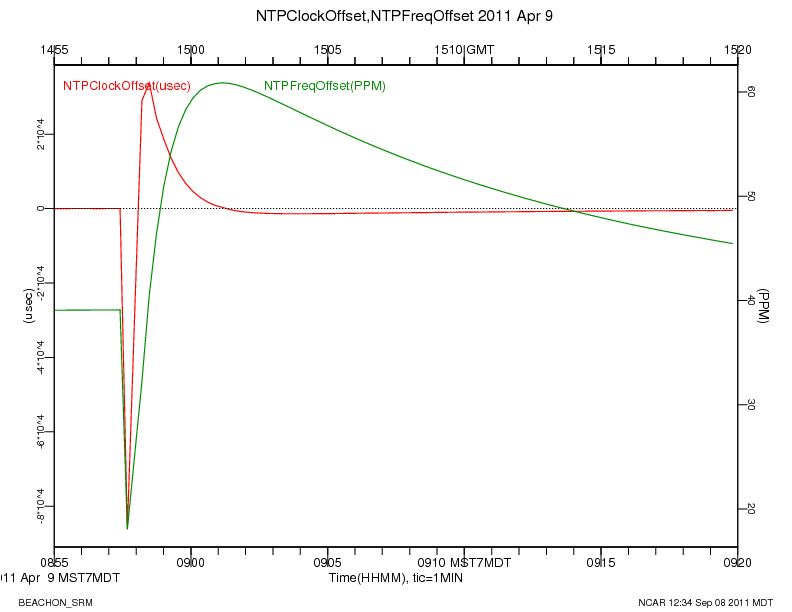...
The serial messages from the GPS are received on serial port 3, /dev/ttyS3. The pulse-per-second square-wave signal (PPS) from the GPS is also connected to the CTS DCD line of that serial port. A patch has been added to the Linux kernel on the data system so that an interrupt function can be registered to run in response to the CTS DCD interrupts. This interrupt function will be called immediately after the rising edge of the PPS signal has been detected by the serial port hardware.
...
NTP on the DSM is configured to log its status in a "loopstats" file. See http://www.eecis.udel.edu/~mills/ntp/html/monopt.html![]() for information on the NTP monitoring options. The loopstats file includes these variables, which have been merged into the Manitou data archive:
for information on the NTP monitoring options. The loopstats file includes these variables, which have been merged into the Manitou data archive:
...
The NTPClockOffset shows spikes between -100000 to 50000 microseconds during this period, which is much worse than expected for a GPS/NTP reference clock. The spikes in NTPClockOffset are simultaneous with positive jumps in GPSdiff_max, up to as much as 2.5 seconds. These events seem to happen when the number of tracked satellites changes, which indicates that internal processing lags in the 25-HVS cause it to report late, causing large values of GPSdiff. It is unknown if The extent of this effect on the timing of the PPS signal is effected by these eventsunknown.
The following plot shows a close up of one of the clock offset spikes using un-averaged data:
...
